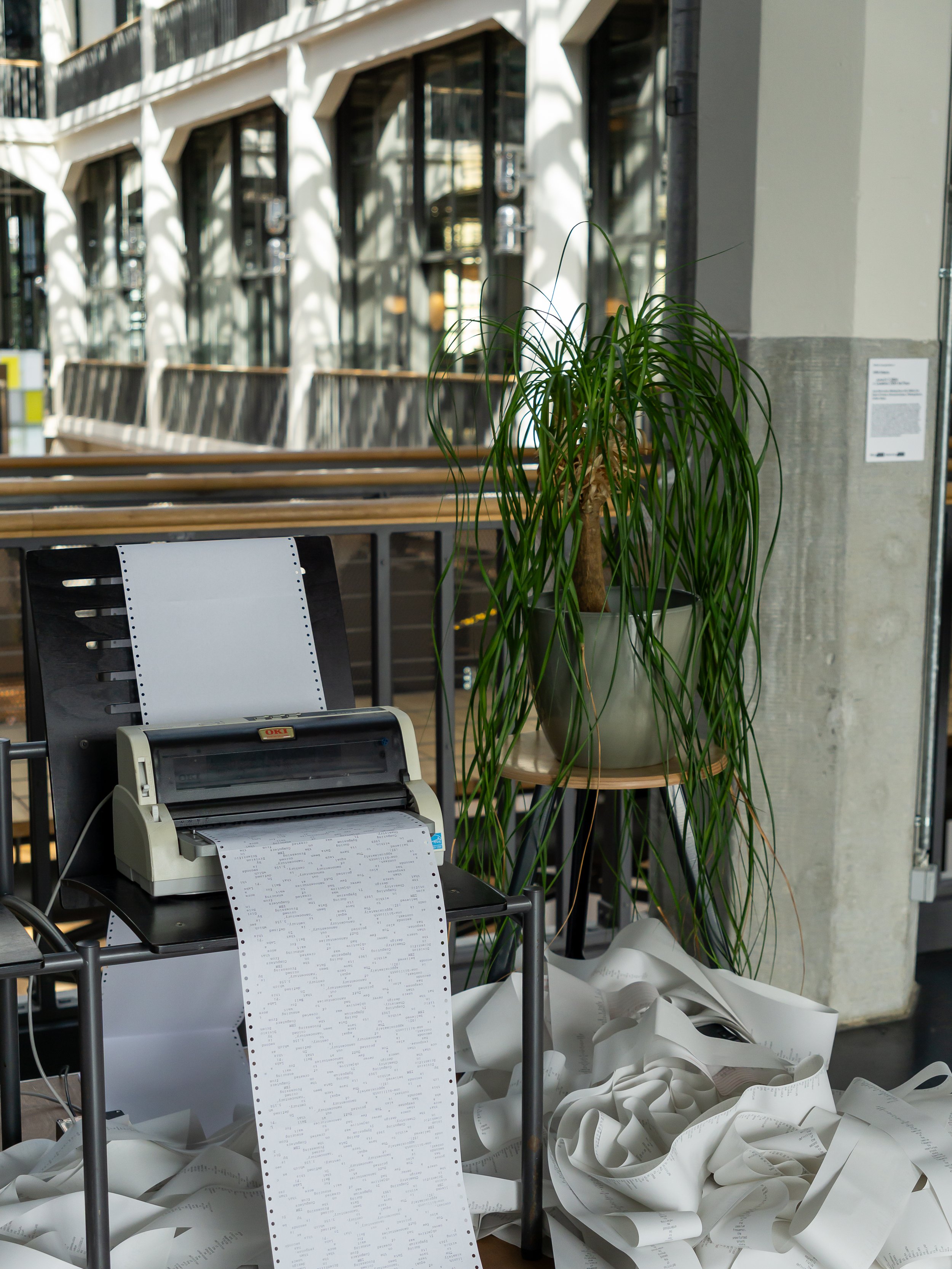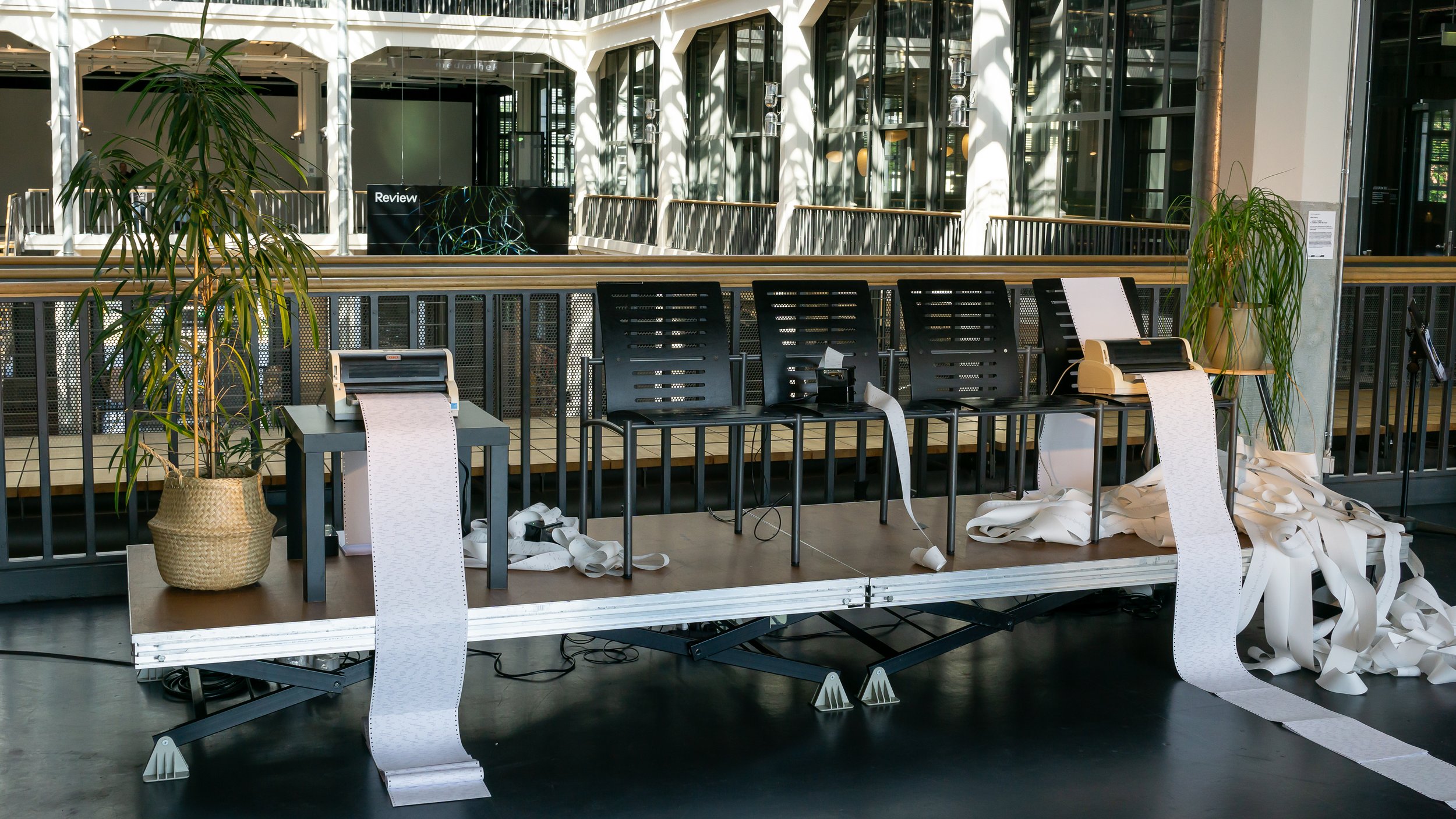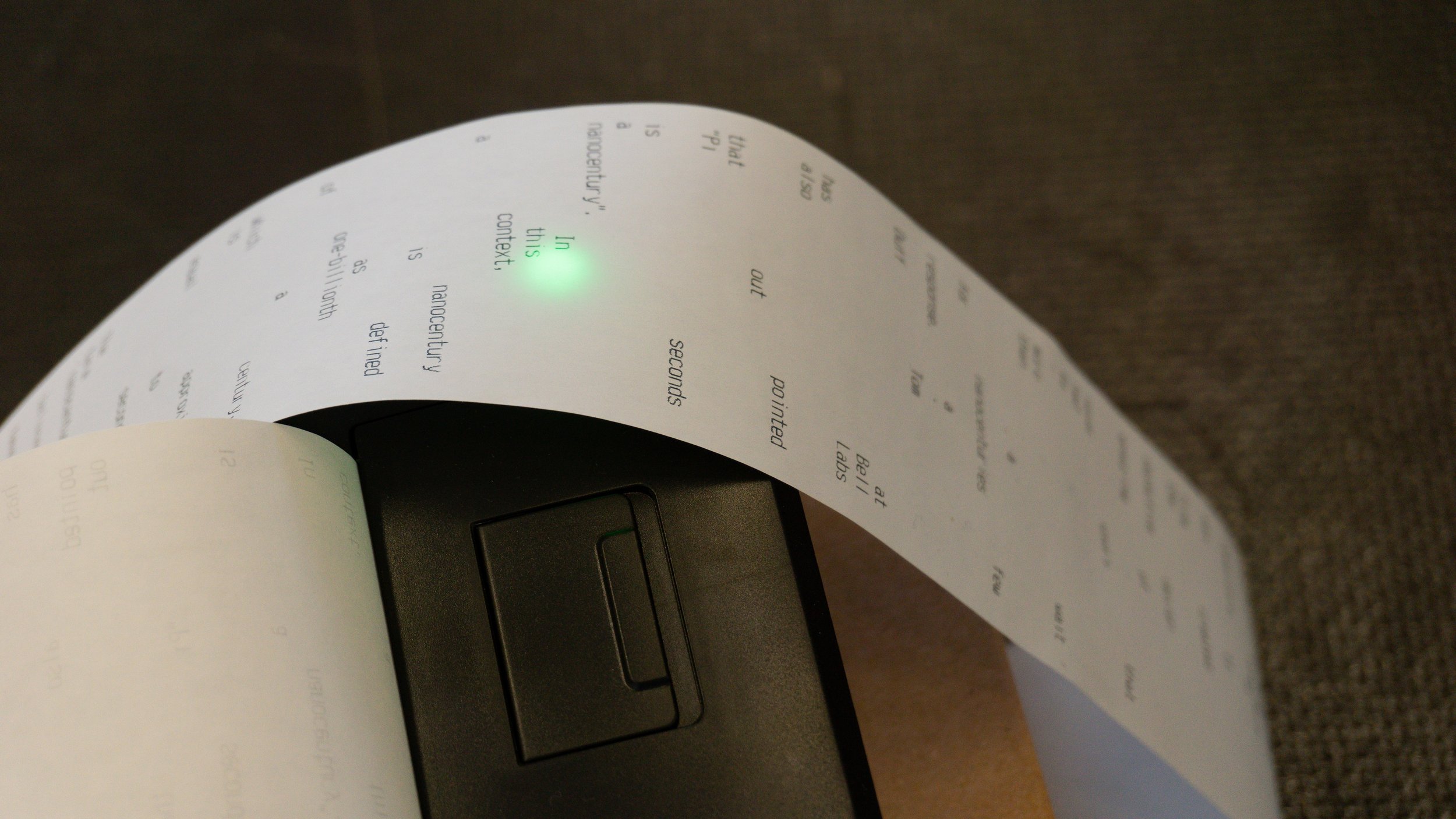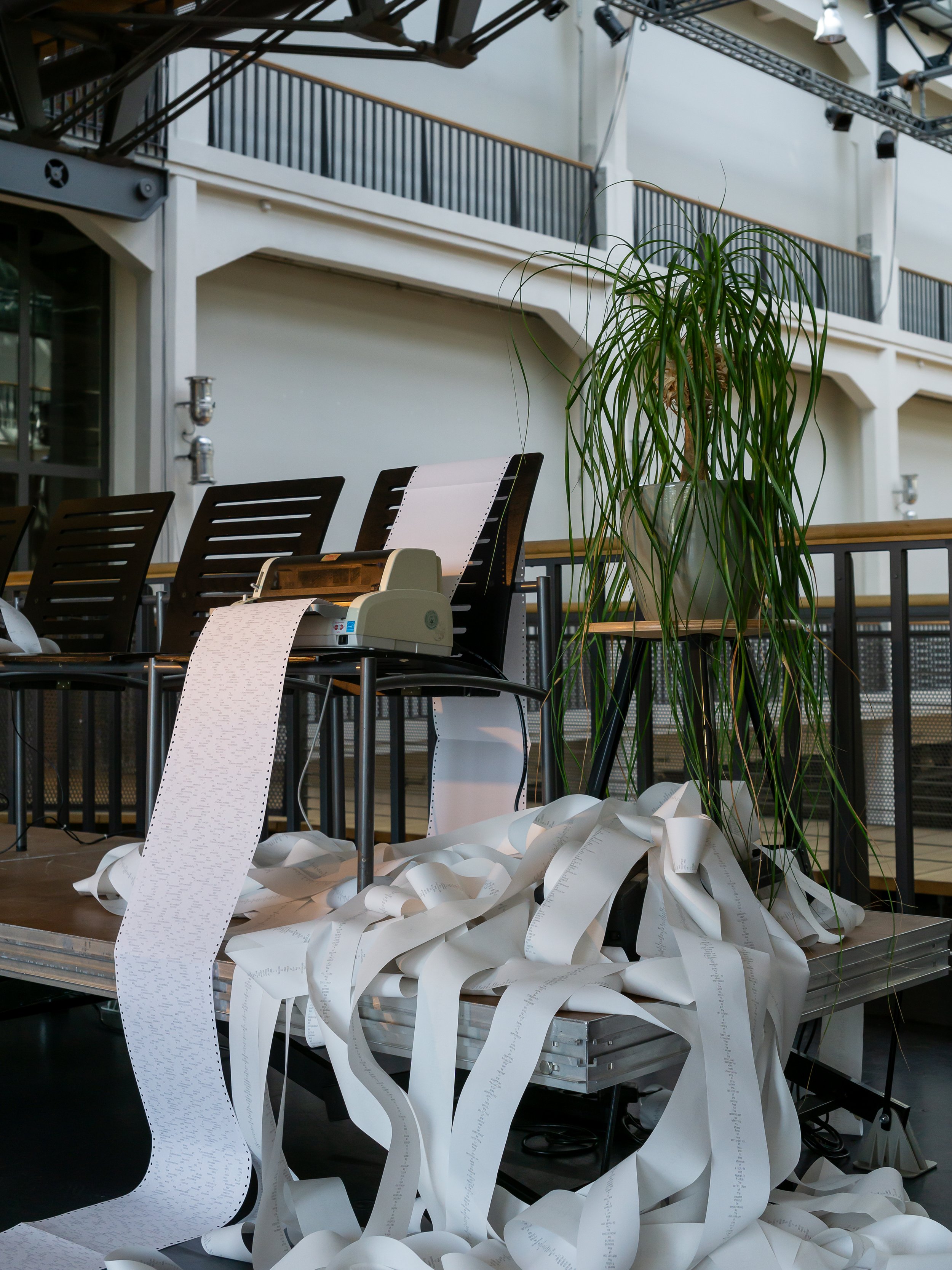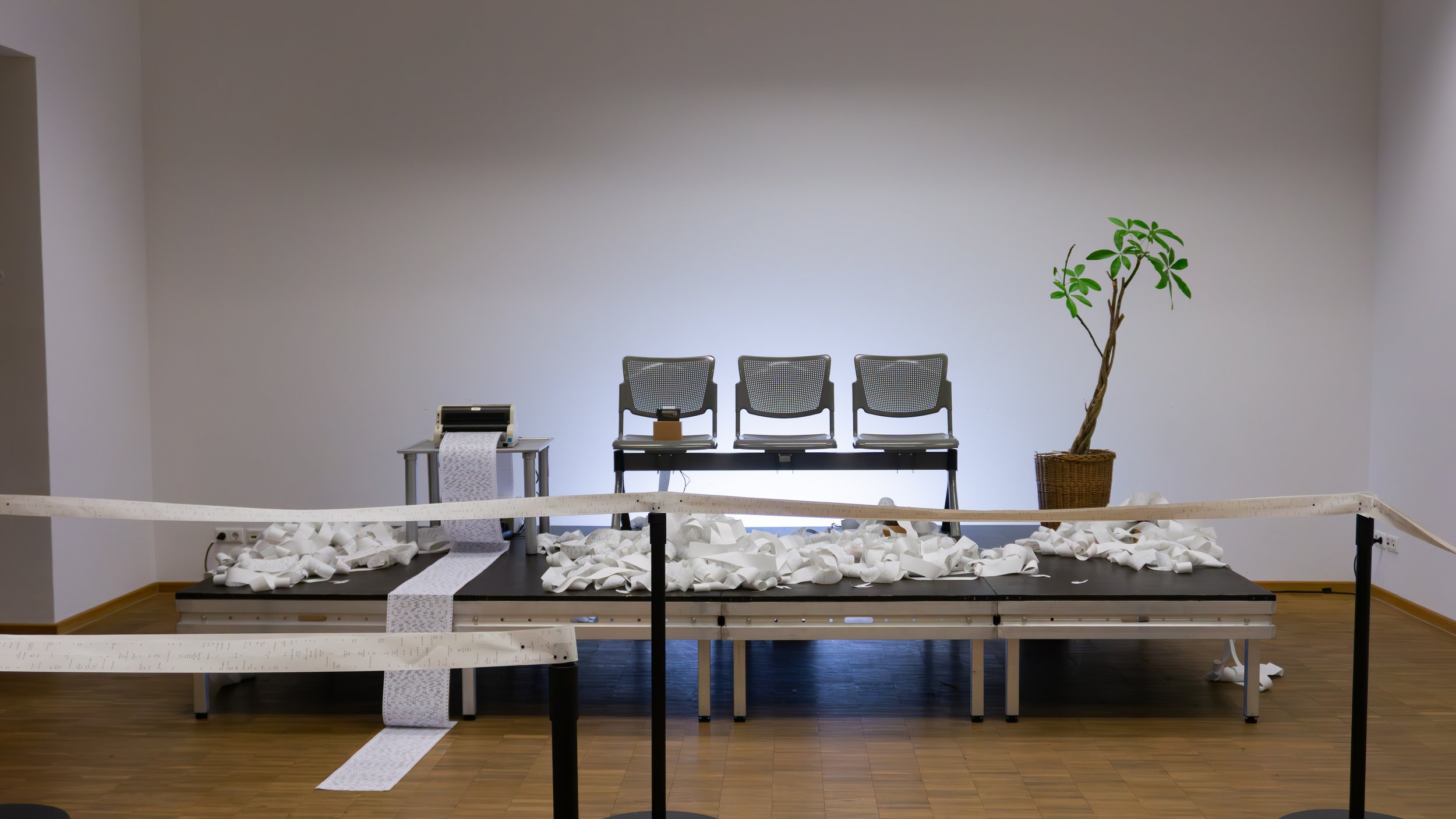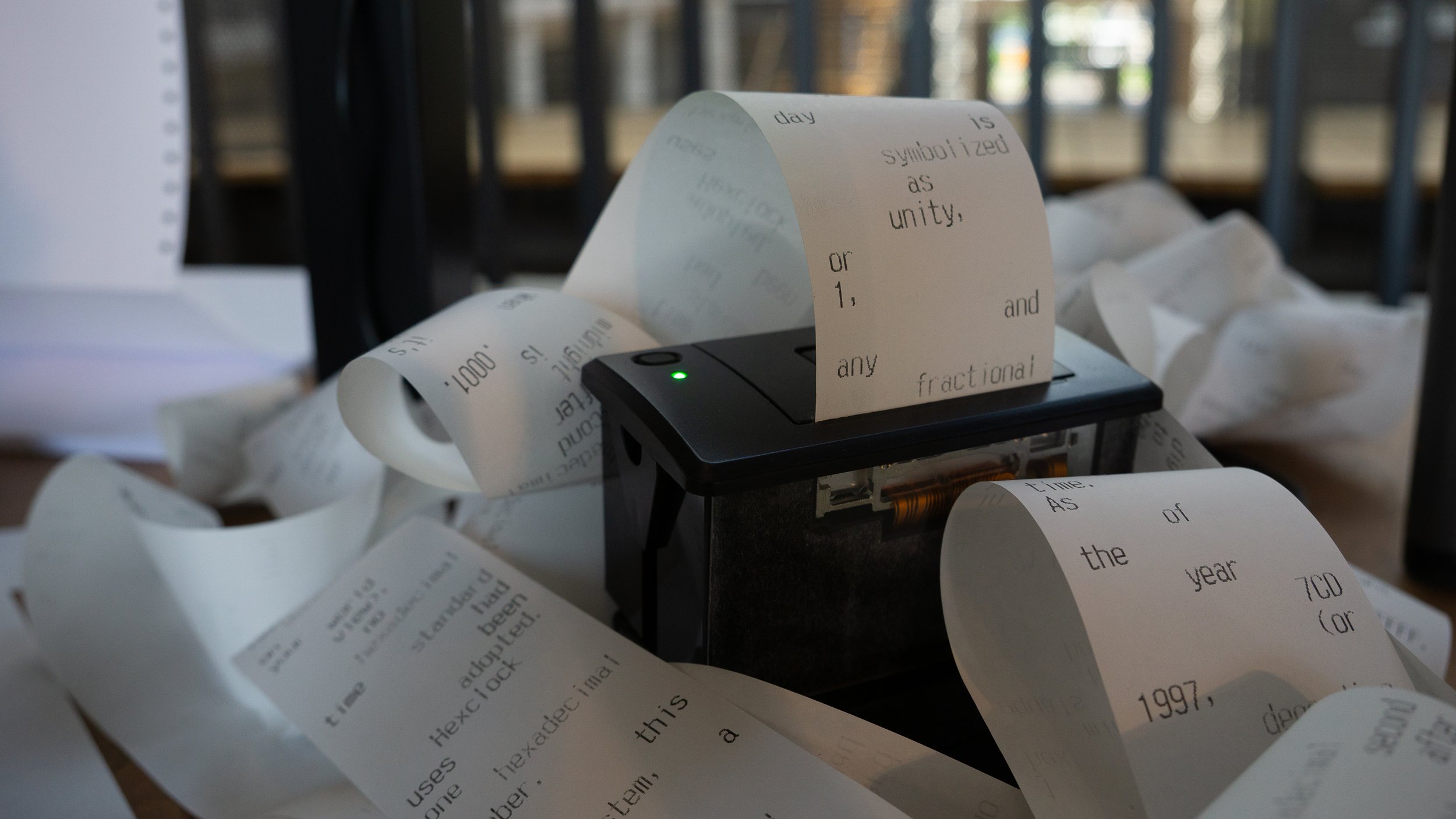
Waiting Room No. 2
2023
Intermedia Installation
Thermal printers, dot matrix printer, 4 x 1 m stage and waiting room furniture
Just as liquids conform to the vessel that contains them, time is shaped by the social, technological, and political factors of a specific era. The six printers in this artwork tirelessly produce five distinct definitions of units of time. From the precision of our current concept of a second to the rhythm of a Sanskrit treatise in Indian astronomy, the "moment" as conceived by medieval monks, or the nanocentury devised by IBM at the dawn of the computer age.
The emergence of a new definition of a second makes us consider how we wish to define our future units of time. Will an abstract measure, like the hexadecimal minute or other proposals, be relevant for a future where humans might not even exist or inhabit Earth?

